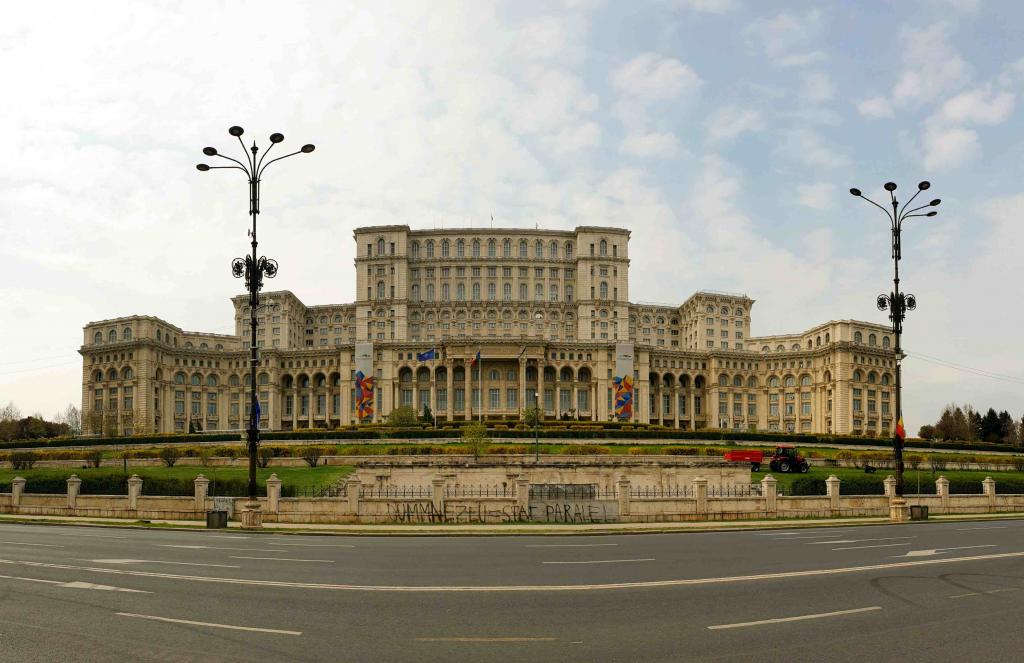Thessaloniki gets ready for its metro launch in November
The underground rapid transit lines have been under construction for almost two decades due to various project delays
 TheMayor.EU logo
TheMayor.EU logo 
The Palace of the Parliament (Palatul Parlamentului) is the heaviest building in the world, sitting at 4,10 million tones
President Ursula von der Leyen said this is good news, however, now municipalities need to deliver on the projects laid out in the plan
On 27 September, the EU Commission finally endorsed Romania’s 29-billion-euro recovery and resilience plan after months of negotiations. This amounts to more than 10% of the Romanian GDP and according to President of the EU Commission Ursula von der Leyen this is good news, but there is still a lot more work to be done.
The priorities and projects set out by Romania’s plan need to be implemented on the local level and municipalities need to deliver on reforms and tangible results – a task that could prove rather difficult.
Prime Minister Florian Citu promised that the central government will pay close attention to the implementation of the recovery plan and will institute all necessary reforms and measures to ensure that the funds can get to where they need to go.
He said that this is a chance Romania is not allowed to miss out on, a chance to make the country’s economy more robust and efficient and a chance to leave a revamped Romania for future generations.
The Romanian recovery plan has an almost 50/50 split between grants and loans, with investments focusing on three key sectors – Green Transition, Digitalisation, and Economic and Social Resilience. They will receive 14,2 billion euros in grants and 14,9 billion euros in loans.
The biggest portion of the recovery plan will go towards Green Transition, around 41%. The biggest share (3,9 billion) of that will, in turn, be used to revamp the railway system, followed by a 2,7-billion-euro investment into the energy efficiency of the housing stock.
Another sector to benefit from the plan is Urban Mobility at 1,8 billion and the last one is clean energy production with 855 million.
Romanian lawmakers envision 21% of the funds going towards supporting the digital transition. 1,5 billion euros will be spent to digitalise the public administration, 881 million will go towards digital service in education and last but not least – 470 million will go towards digitalising healthcare.
The last sector is called Reinforcing Romania’s Economic and Social Resilience. Here, there are some key issues the government wants to focus on, however, they have not yet laid out specific programmes and costs for most of them. These are strengthening the public administration, social and territorial cohesion, fiscal sustainability and strengthening the resilience of the health system.

The underground rapid transit lines have been under construction for almost two decades due to various project delays

Now you can get your wine in Talence by paying directly in Bitcoin

That’s because the state has to spend money on updating the railway infrastructure rather than subsidizing the cost of the popular pass

Rethinking renewable energy sources for the urban landscape

The examples, compiled by Beyond Fossil Fuels, can inform and inspire communities and entrepreneurs that still feel trepidation at the prospect of energy transition

Now you can get your wine in Talence by paying directly in Bitcoin

The 10th European Conference on Sustainable Cities and Towns (ESCT) sets the stage for stronger cooperation between the EU, national and local level to fast track Europe's transition to climate neutrality.

At least, that’s the promise made by the mayor of Paris, Anne Hidalgo

The underground rapid transit lines have been under construction for almost two decades due to various project delays

At least, that’s the promise made by the mayor of Paris, Anne Hidalgo

Hostal de Pinós is located in the geographical centre of the autonomous region

Despite its church-y name, the district has long been known as the hangout spot for the artsy crowds

Urban dwellers across the EU are having a say in making their surroundings friendlier to people and the environment.

Forests in the EU can help green the European construction industry and bolster a continent-wide push for architectural improvements.

Apply by 10 November and do your part for the transformation of European public spaces

An interview with the Mayor of a Polish city that seeks to reinvent itself

An interview with the newly elected ICLEI President and Mayor of Malmö

A conversation with the Mayor of Lisbon about the spirit and dimensions of innovation present in the Portuguese capital














